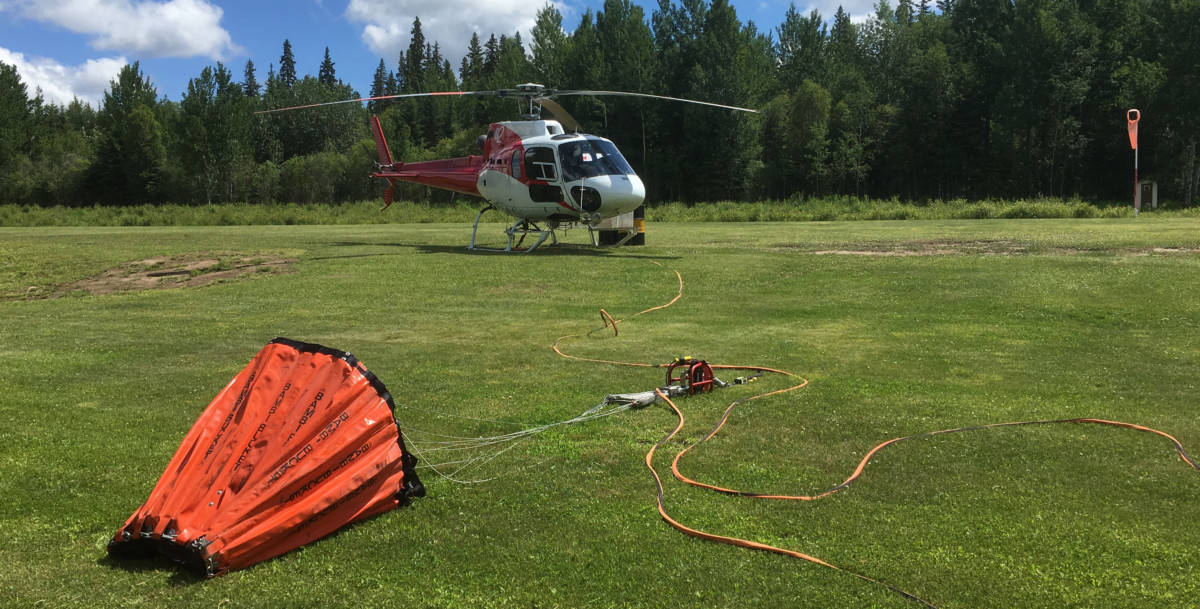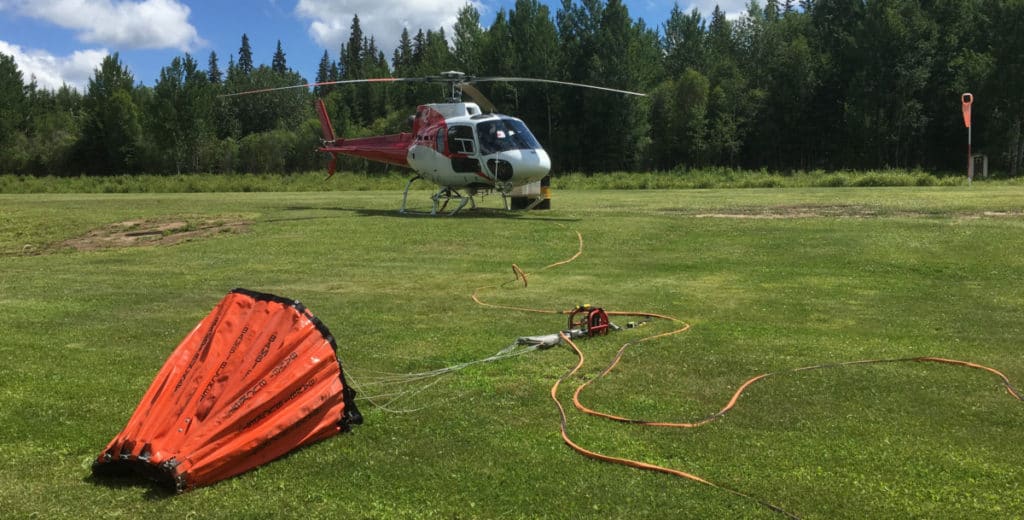
At some point in a future pilot’s thoughts are the types of jobs a helicopter pilot could actually do and which might be a perfect job for that person. There are so many jobs and some of them are obvious, and some not. That was how it was for me. When I got into the industry the amount of different flying I could do was endless! Why did I not know about all these jobs beforehand??
There are many types of jobs a helicopter pilot can do throughout their career. Here are just a small selection:
- Fire Fighting Pilot
- ENG – News Helicopter Pilot
- Utility Pilot
- Police & Law Enforcement Pilot
- Military Pilot
- Coast Guard Pilot
- Heli-Skiing Pilot
- Heli-Logging Pilot
- Flying Instructor
- Tour Pilot
- Corporate & VIP Pilot
This article is going to list some of the main types of flying that a pilot could do during their careers and many of them can change on a day-to-day basis, especially if the pilot works for a company with a wide variety of customers in many different sectors of work.
What are some Entry-Level Helicopter Pilot Jobs?
Getting that first job straight out of flight school is tough and may require lots of calls, visits, and determination. But once that foot is in the door it is time to buckle down and show the management why they made the right choice in hiring you.
A lot of the entry-level flying jobs can become monotonous after a while as the jobs available to do usually require very little honed skills or experience and the high-time guys ‘Have Done Their Time’ in the ‘Boring’ jobs.
Here are some of the best entry-level helicopter pilot jobs:
1. Flying Instructor
Most US-based pilots will be taught by a low-time pilot without realizing it, but in the US, flight instruction is open to low-time pilots because they are great for business.
Low-time, keen, cheap wages and the revolving door of instructors moving on make a great carrot to dangle for any flight school owner.
Most flight schools will look to hire their own graduates once they have completed the CFI (Certified Flying Instructor) or CFII (Certified Flight Instructor Instruments) and have the Robinson Factory Safety Course under their belts.
An applicant will need over 200 hours.
Flight Instruction is a great way to start your career providing you remember that you yourself know absolutely nothing about flying! All you can do is teach a student how to handle a helicopter within the limitations of the aircraft flight manual and the regulations. You do not have the experience to teach them ‘How To Fly’!
With a busy school, you can easily fly 500 hours in a year but in most schools, you will be looking between 200-300 hours and all around the $20/hour mark. Most of the time will be spent in the training circuits and surrounding areas teaching the basic flight maneuvers. Teaching one-on-one and class-based ground school is also part of the job.
I love flight instruction and it can be a very rewarding experience for the pilot that is not just there purely to ‘Build Hours & Run’.
2. ENG – Electronic News Gathering Pilot
Getting a job as a News Helicopter pilot is a bit tougher just because the amount of positions available is a lot less compared to flight instructors.
Most entry-level ENG pilots will start on a Robinson R44 and the entry requirements may require R44 time which may be a problem to most students who did all of their training on a different helicopter.
News pilots will usually be required to work the early morning shifts or the evening shifts. Covering the morning and evening traffic is the staple of the ENG machines with a pilot on standby to launch when some news-worth action kicks off during the day.
Most ENG helicopters now have a pilot and then either a camera operator and/or a news reporter in the back. There used to be times when the pilot did the flying, filming, and reporting but this has long gone due to health and safety concerns and accidents.
The pilot’s job is to position the machine for the camera operator to ‘Frame the Shot’, working with air traffic control and other ENG helicopters in close proximity can make the pilot quite busy! Good communication, situational awareness, and handling busy airspace is a must as most ENG is over large, dense metropolitan areas.
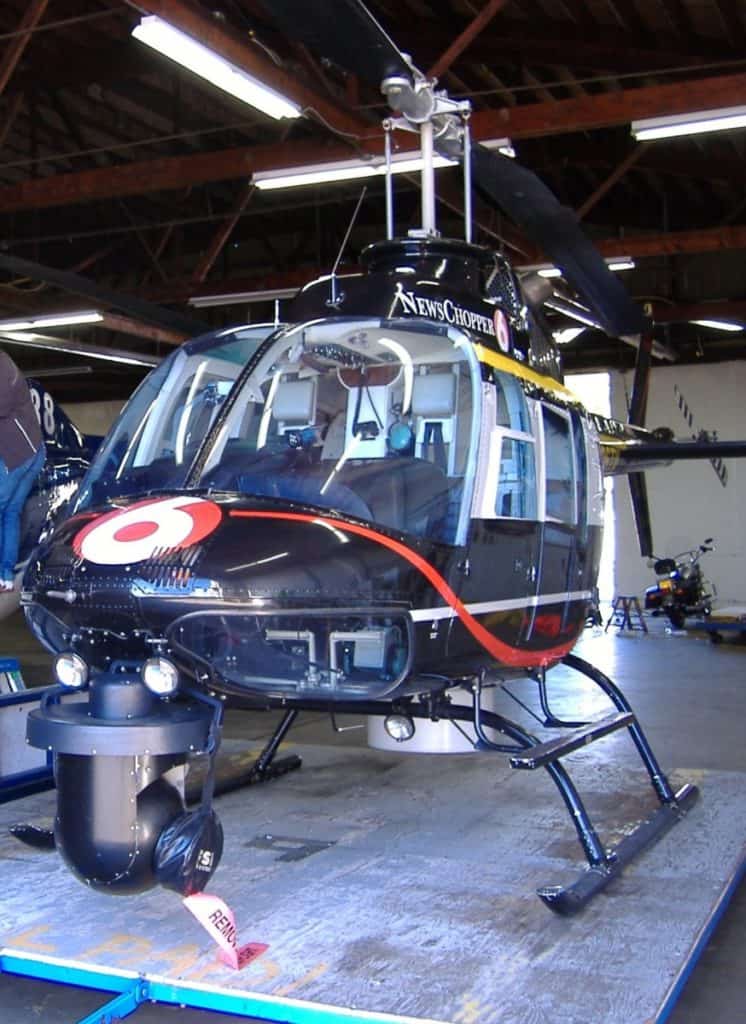
Once a pilot has shown their commitment and got some good experience it is not uncommon for an operator to upgrade the pilot to a Bell 206, Bell 407, or AS350 Camera ship.
3. Co-Pilot
On some of the larger twin-engine helicopters, Co-Pilots can be taken on with only a few hundred hours depending on the operator and the contracts they have.
Flying co-pilot can be a great way to gain some valuable experience and knowledge flying with some very experienced ‘Old Salts’, but you will have to remember you will be in that position for many years until you meet the companies hour and experience requirements to apply for a captain or command position.
Most of the co-pilot’s duties can be flying the machine from point A-B, monitoring hook weights, number of loads, instrumentation, navigation, and communication.
The job of the co-pilot is to help the captain in any way they deem. Some captains are great and some can be egotistical jerks.
Copilot jobs can be found working on Wildfires, Offshore Transportation, EMS, and Military. Strong stomachs may be needed as most of the time the co-pilot’s attention is on the instrumentation, especially during fast production heli-logging!
Learn More…
Try These Articles:
* How Much Does it Cost to Become a Helicopter Pilot?
* How Long Does It Take To Become A Helicopter Pilot? – Your Guide
4. Frost Protection Pilot
Frost protection can be an interesting gig for the right pilot. This type of job usually uses smaller helicopters like Robinson R22’s & R44’s, MD500’s or Bell 206 Jet Rangers flying low and slow over crops to use the rotor wash to pull down warmer air from above and prevent frost from forming on the crops and killing them.
This will usually be done during the night or first light depending on the situation and can become very monotonous. Obstacle and wire awareness & avoidance have caught out a number of pilots who forgot when their brains switch off!
Although these jobs are very seasonal and you may have to meet the right people to get that first job, it can be a way to get your foot on the first rung of the career ladder.

Join My Newsletter & Get Great Tips, Information and Experiences To Help You Become a Superb Pilot!
5. Ferry Flight Pilot
Getting to ferry a helicopter across the country can be a great experience. Flying over places many of the masses will never get to see is a cool feeling. Delivering helicopters to new customers, moving machines for planned maintenance, or returning helicopters at the end of leases or contracts are some of the most popular reasons for ferrying helicopters.
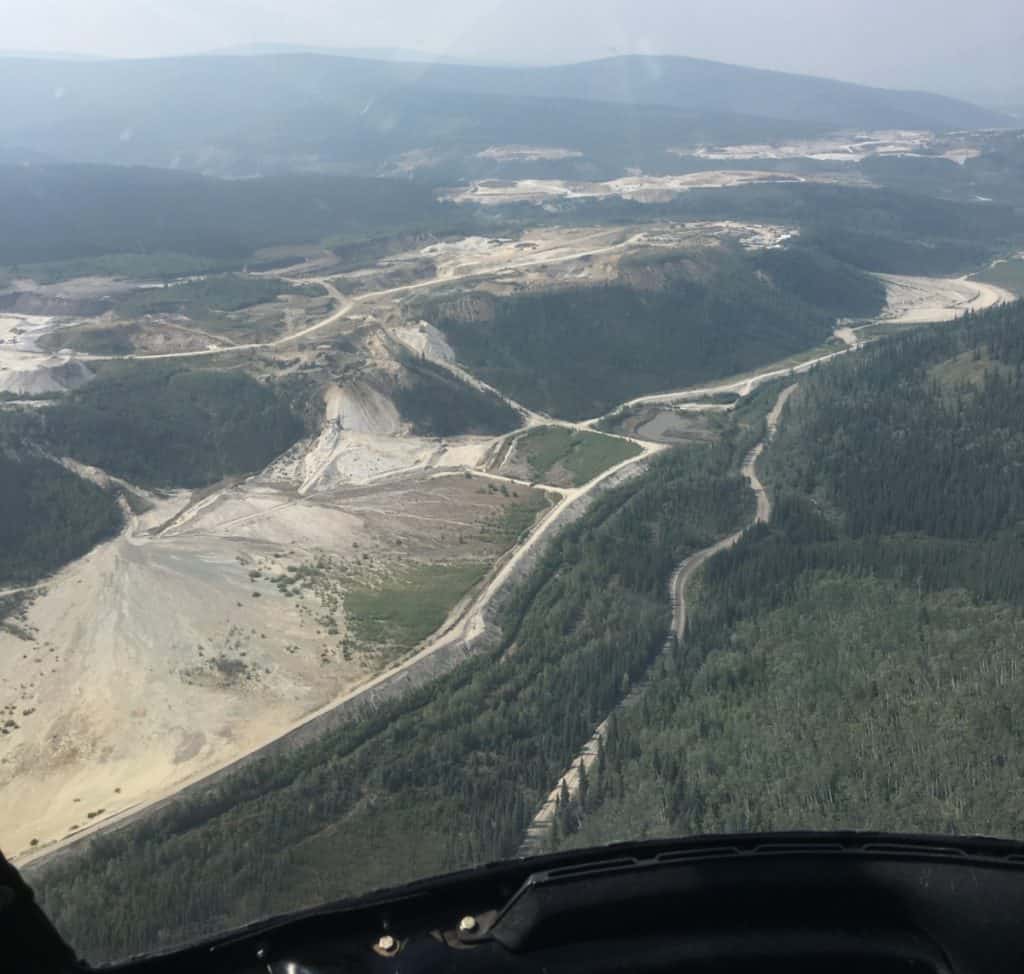
Many of these flights are given to the junior pilots to help build time in the aircraft to allow the helicopter company to use that pilot on contracts with minimum hour requirements.
Ferry flying is not a simple task and requires good flight planning, weather monitoring, fuel planning, and good airmanship. A well-planned ferry flight can be a very rewarding flight, but a poorly planned flight can have the pilot tense for hours or worse.
Weather and high terrain can make ferry flights a bad choice for a low-time pilot and good judgment will be required.
6. Photo Flight Pilot
Photo flights are used to get photos of homes, properties, yachts, construction sites, natural disasters, or anything requiring an aerial shot. Although this will soon be a thing of the past now drones are flooding the aerial photo market.
Photo flights can be a good job for a low-time pilot if you can find the right company to work for and there are not that many. You could be called on if you manage to get working for a regular commercial helicopter company when a photo flight comes in. I have done many over the years and they can be really interesting.
The pilot has to be very aware of wind and performance due to the camera operator always wanting to get a shot from a position that is unfavorable to the aircraft – I swear they do it on purpose! An alternative suggestion may be required by the pilot or the preparedness to just say “No, Not Today” if the alternative goes on deaf ears!
+1000 Hour Helicopter Jobs
Even though it is a great challenge getting your commercial helicopter pilot license, it is getting more and more difficult to get that first flying job. Customer hour minimums and insurance rates keep climbing making it that much harder.
For most helicopter companies you are going to need around 1000 hours before they will begin to look at you, but once you break that 1000 hour mark things start to get a little easier.
Some of the jobs listed below may still not be reachable until you have considerable experience, but they are a great goal to work towards and every company has its own requirements so it is always worth a look at their website or a phone call to their Chief Pilot or Operations Manager.
7. Utility Pilot
The general utility pilot is the ‘All-Rounder’ type of job. This is where a pilot works for a helicopter company and the type of job assigned each day can be as varied as a sock drawer.
One day can be spent doing a pipeline survey, the next a photo flight for a real estate developer, and the next day flying a group of young ladies to prom. This is the way many helicopter companies may operate and it all depends on the type of helicopters they have and the variety of customers they fly for.
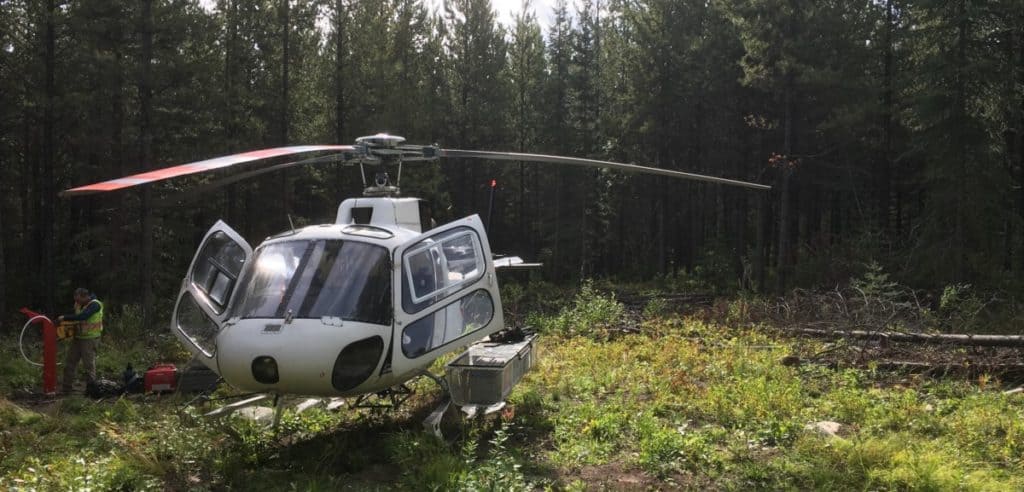
This type of job can be very interesting and a great way to broaden a pilot’s skill base before getting into any specialized type of flying job.
8. Game Capture & Survey Pilot
Game Capture involves working with landowners, government wildlife officers, or possibly environmental scientists to capture, examine, and then release various forms of wildlife.
This can be done from the aircraft using guns that fire nets, tranquilizer darts, and/or the setting up and inspection of humane wild-capture traps.
The use of firearms from a helicopter requires very high levels of training and procedures to be used and the added complexity of maneuvering low to the ground while traveling at speed can really keep a pilot on their toes.
When surveying wildlife this is usually done from altitude and can be done by following tracks or tracking radio collars, depending on the animal. This type of flight is mainly used to get numbers for monitoring the population or seeing where the animals are moving throughout the year.
Wildlife surveying requires far less experience compared to low-level game capture and this will probably be the first step for any pilot before going into the capturing side of this job.
9. EMS/MedEvac Pilot
Flying an Air Ambulance helicopter can be one of the most rewarding jobs for those who like to help others. Being part of a team that can begin the process of putting a person’s life back together from the worst moment in that patient’s life can be really humbling.
Most EMS helicopters will be 24/7 operations working on a set day/night schedule in either a single or dual-pilot operation. EMS can be a very nice stable job as a lot of other flying jobs can be seasonal or impacted by economic trends leading to periods of unemployment each year.
For those pilots wanting to start a family or wish to be home every night, EMS can be a great option. Depending on the base assigned, the pilot could be busy and fly a lot each shift or have to be prepared for days without a call. Severe boredom can affect any pilot who is not able to occupy their time if assigned to a quiet base.
Most EMS single-pilot positions will start around 2000 hours with 500-1000 hours of turbine time requirements, whereas some of the dual-pilot operations may accept co-pilots with as little as 500 hours. There is always a good selection of positions for an EMS pilot all over the country from many different companies.
10. Police & Law Enforcement Pilot
Many pilots exiting the military will find their way into this type of civilian career but civilian pilots with zero military experience may also be able to find a seat in the right place once they meet the requirements.
Police and law enforcement usually involves working with ground personnel to help locate, survey, and manage incidents from the air. A majority of the flying may be completed mainly during the night and flying circles over a city are not uncommon for a typical police helicopter operation.
Many police helicopter operations will involve the pilot, a police officer controlling the camera, and possibly an additional officer in the rear of the aircraft working the radios to communicate with the ground personnel if that task is not completed by the camera operator.
Police operations can be fun and exciting, but also times of boredom waiting for that phone to ring and someone to get up to no good. Depending on the operation, a police pilot may be employed to work only on constant night shifts.
11. Search & Rescue Pilot
SAR can be a very rewarding job and also a very sad job until the pilot has gotten used to the sight of victims who have not made it. Working a SAR machine can require extensive experience depending on the locals of operation.
SAR is mainly used in the mountains, offshore or by local operators with contracts to cover national parks or remote areas. Some of the helicopters used can be simple single-engine, general utility aircraft, all the way up to complex, two-engine, two-pilot dedicated SAR machines.
A dedicated SAR crew is a highly trained group of individuals that will work as a team to assist people in danger or ground personnel to fly and hopefully locate and rescue the person/s that need help. A lot of time may be spent training and preparing equipment for a call and depending on the base, SAR pilots can be on call 24/7 in all weather, but there could be a lot of downtime between calls.
When SAR is requested from a local helicopter operator a pool of highly-experienced pilots will be on-call to assist in the operation. This type of job generally requires extensive local knowledge, skill, and experience before being eligible for a position.
12. Heli-Logging Pilot
Heli-logging involves the use of a helicopter to remove felled or prepared trees from a hillside/forest/farm and taken to a loading/drop site over and over again.
Heli logging can range from harvesting Christmas trees in a Bell 206 Jet Ranger, all the way up to huge timbers being pulled off a hillside by S61’s, Chinooks, and Skycranes.
Most operations consist of two-pilot crews, with the left-seat pilot flying and the right-seat co-pilot monitoring weights, turns, and instrumentation. Heli-logging is one of the jobs many low-time pilots can begin their career as a right-seat co-pilot.
Heli logging can be hard work with entire days flying up and down a mountainside and depending on the flying pilot, it can be done smoothly or like being on a roller coaster! This job is not for pilots prone to motion sickness or weak stomachs.
13. Vertical Reference Pilot
Vertical Reference is the term used when flying a helicopter by looking straight down rather than out of the front window. Using a Longline of 50ft and longer will require the use of vertical reference flying.
A Longline is a synthetic or steel wire attached to the bottom of the helicopter which will have a device mounted on the end of it that can be controlled by the pilot. This device can range from hooks, fire buckets, carousels, or similar depending on the type of job being undertaken.
There are two types of vertical reference flying:
- Production Flying – Heli-logging and fire bucket operations require moving the most amount of material in a given period of time. Inch precision is not required
- Precision Flying – Used mainly when aerial construction is required. Moving towers or air conditioning units into position or assembling mineral exploration drills on the side of a mountain
Being proficient on a Longline takes a lot of practice and a good vertical reference pilot will have been doing it for thousands of hours. It can be challenging but very rewarding work for the right pilot. The pros make it look so easy, but I can tell you it is not! It is truly a skill that can only be learned by doing it!
14. Heli-Skiing Pilot
Heli-Skiing is when a helicopter is used to take a group of skiers and their guide up to mountain peaks to ski and snowboard. This is very popular for those skiers who wish to go places where the masses do not see and get the ultimate ‘Powder’.
Many dedicated heli-skiing resorts are in all of the popular locations offering some of the best skiing in the world. The majority of operations use Bell 407’s, Airbus AS350’s, and Bell 212’s to take groups to the spots chosen by the guides. On a good day, with good routes, good weather, and a good pilot, skiers can easily complete between 6000-9000 vertical meters.
Heliskiing requires extensive mountain experience and local weather knowledge. The pressure from clients to get out skiing in poor weather can lead to accidents. A good heli-ski operation will work with excellent guides and the pilots to determine when it’s good to go and time to quit.
Alpine Helicopters in Alberta, Canada have an excellent program for low-time pilots to join, work the ramp, begin doing tours, work up to supporting a ski lodge, and then onto the heli-ski program over the space of several years. It’s a great program and I know many pilots who began their careers this way and still heli-ski in the quiet winter months.
15. Tour Pilot
Becoming a tour pilot is usually a great step for many pilots once they pass the 500-1000 hour mark. Some of the larger tours in Las Vegas and Hawaii usually require more time and some turbine experience just because of the environments they fly in.
A tour pilot will spend most of the day flying set routes that are either non-stop flights or flights to a scenic location, stop for lunch/break, and then fly back depending on the tours selected. Some tour operators require their pilots to give the tour commentary while flying, others may have a set audio presentation that the passengers listen to, while other tour operators may have nothing.
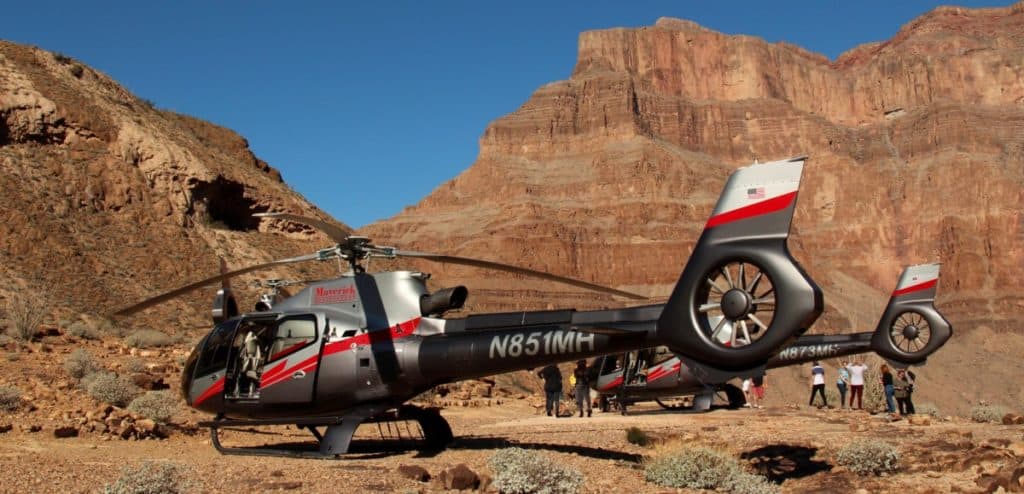
Becoming a tour pilot can be a great way to start building some hours but remember a 2000 pilot who has been flying ‘The Ditch’ in Las Vegas will not be as experienced as a 2000 hour utility pilot. Tour flights can become monotonous after a while and most pilots will do this for a season or two before moving on to something new or a different tour location.
I know a few pilots who started tour flights in Las Vegas at 1500 hours then moved to Hawaii to fly tours once they had completed 3000 hours for a change of scenery and the challenge of flying around Hawaii’s mountains.
Learn More…
Try These Articles:
* Learning To Fly Helicopters – Is it really that hard?
* Skills Needed To Become a Pilot? – A Flight Instructors Perspective
16. Corporate/VIP Pilot
Corporate and VIP charter pilots are a very special breed! From the ones I have met, they are all very patient and diplomatic people! Being able to stand up to a very wealthy person who never gets told ‘No’ takes a lot of finesse!
Many corporations and wealthy families either own, lease, or charter a helicopter and the pilot/s. Some pilots can be employed by those businesses and owners or can work for a VIP charter company and will fly whoever has booked the aircraft.
For those that can afford it, their time is very important and efficient, professional service is expected at the highest levels and the threat of being fired happens regularly, particularly when the flight is canceled due to poor weather.
Many flights are to and from large properties into the metropolitan cores, or to golf courses and restaurants when some PR is required. The variety of flights that can be done is immense! One pilot was telling me a story of how the client’s 7-year-old son demanded the pilots take the S76 back into the city just to get his forgotten baseball! Not a cheap flight, but money was no object!
A corporate pilot can be on-call day and night and some time away from home may be required if the family wishes to have their helicopter with them while on vacation in the Caribbean for example.
Becoming a Co-pilot in a VIP/Corporate company may be a way for lower time pilots to get a start in the industry, but Captains will be well versed in how to ‘Delicately Deal with the Clients’ by the time they have the experience required to command those helicopters.
17. Off-Shore Oil & Gas Pilot
Helicopters are the taxis of the offshore world. Ferrying workers back and forth from land to drill rig or rig to rig is the day-to-day life of an offshore pilot.
Helicopters can range from the smaller Bell 206 Long Ranger all the way up to the mighty Sikorsky S92 and with the right company, progression into larger helicopters can be very easily accomplished as a pilot’s experience grows.
Many offshore helicopter operators will work a pilot on a 14 on/14 off schedule and allow the pilot to live away from the company and be flown in and out for their tours with company accommodation provided.
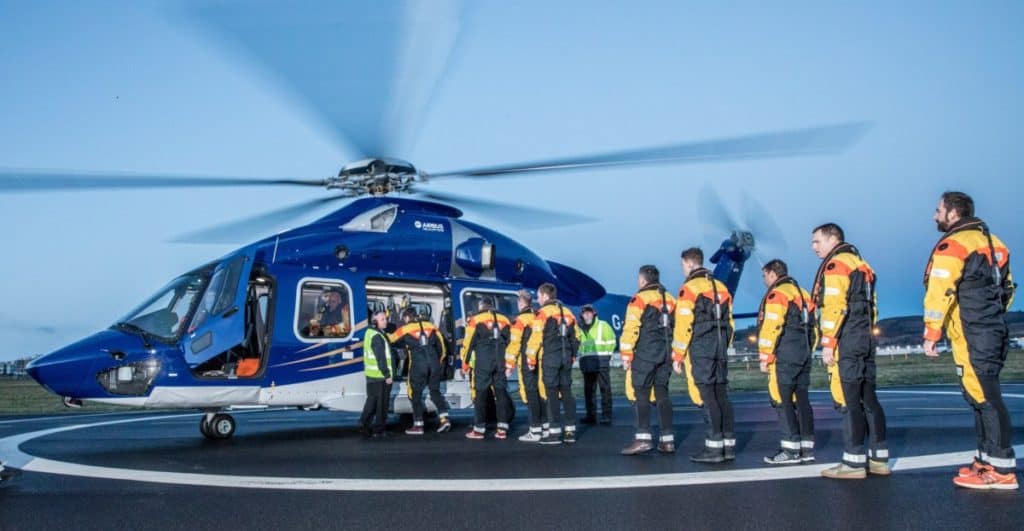
As pilots progress up to the larger IFR machines then flying in all weather becomes part of the job and some of that weather can be very nasty! I know many offshore pilots that at certain times of the year are flying in nothing but 1/2sm visibility on a good day!
To some, flying ‘The Bus’ can become tedious after a while, and for others, they love the job so it is a job many have to try to see where they fall in the Love/Hate relationship of flying offshore.
18. Fire Fighting Pilot
One of my students has been a fire-fighting pilot since they left flight school and they love it! Working with a machine against a wildfire can be some of the most fun a pilot can have, all while trying their best, as a small cog in the operation, to protect property and lives.
Pretty much every helicopter can be used to fight wildfires however the Bell 407 and Airbus Astars are generally the smallest machines used with a fire bucket today.
As a wildfire pilot, you can be given a plethora of duties to do on and around a fire depending on the type of machine you are flying. For some low-time pilots, getting a position at a company that flies large, twin-engine machines can be a good first step into the industry and for those with more experience, they can be called at a moment’s notice to get the water bucket and head over to the Forestry Division for assignment or stand-by.
A large fire can entail long days with many hours flying, lots of radio chatter, heat, smoke, and a lot of helicopters operating in a small area. An experienced pilot, but new to the world of fighting wildfires can easily get overwhelmed and really has to take it step-by-step to stay safe and try to enjoy their first few days. But, once they have it figured out it’s a great way to meet other pilots and work as a team against mother nature!
19. Military Pilot
For those seeking the ultimate in helicopter technology then the military is the only way to go. Pretty much every branch of the military has helicopter support and you can find any kind of flying position you wish provided you can meet the strict entry requirements.
All flying positions are officer-level which is going to mean some form of higher education either completed before you join or upon entry, but the cost of all your training and more will be covered. That’s a huge expense and one I’m still paying off!
A discussion with a recruiter from the applicable branch will be able to give you the exact requirements needed for entry, what the job will entail, and every other question you could ever have.
I know if I were to be in my late teens again I personally would have joined the Navy and had some great times flying while traveling the world.
To find a local recruiter in your area click on the links below to take you to the applicable branch websites:
- Find a local U.S. Air Force recruiter HERE
- Find a local U.S. Navy recruiter HERE
- Find a local U.S. Army recruiter HERE
- Find a local U.S. Coast Guard recruiter HERE
10. Coast Guard Pilot
When I was back in flight school our airport had an airshow and I spent the day chatting with the pilot of a U.S. Coast Guard MH-60 Jayhawk and I was hooked. Unfortunately not being an American citizen, my chances of joining were nil.
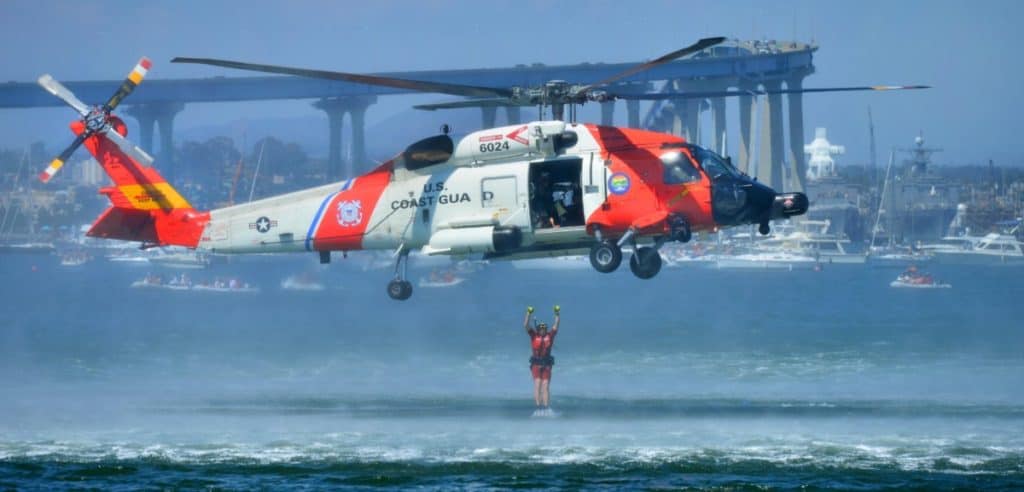
For countries outside of the US, many of the Coast Guard operations are run by civilian operators, and joining them can be done with under 1000 hours and an instrument rating for co-pilots, and over 3000 hours with an ATPL is usually the bare minimum for captains.
Coast Guard missions can include MedEvac flights to ships and platforms, territorial water patrol, searches, water navigation facility maintenance, training, and many other duties.
The one thing to remember about the Coast Guard is that many of their missions are conducted in the most horrific weather, with strong winds, night, snow, rain, and possibly ice, you name it they can be out in it.
For those pilots seeking a little adventure and a challenge with their flying, the Coast Guard good be a great option.
To Finish
There are so many jobs that a person can do once they have their helicopter pilot license and having a goal to work towards throughout their career is a great way to chart a path to gaining the right experience in the right helicopters.
Like most jobs, there are upsides and downsides, and getting started in this industry is one of the hardest. Lower pay, time away from the family, monotony, and putting in your time can really begin to change the mindset of those pilots who are not focused enough.
But with time, determination, and that plan, a pilot can soon find themself in that dream job within 5-10 years of leaving flight school, if not sooner!

